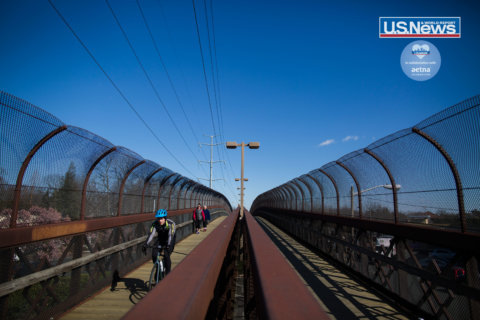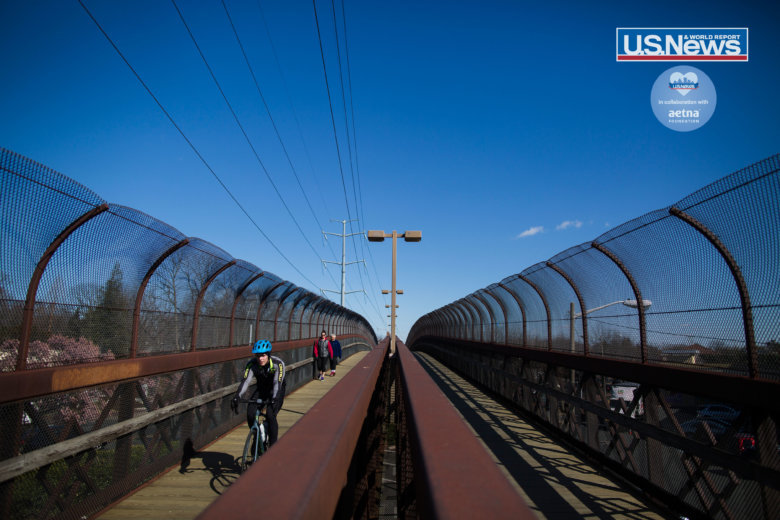
WASHINGTON — A survey of nearly 3,000 communities across the United States has determined that the city of Falls Church, Virginia, is the healthiest community in the nation — one of three Northern Virginia communities in the top 10.
Fairfax City came in at No. 6 in the U.S. News & World Report rankings; Loudoun County ranked 10th.
The top Maryland community was Howard County, which ranks No. 20. Fairfax County, Virginia, ranked 21st; Arlington County, Virginia ranks 31st.
U.S. News said in a statement that the three highest-ranking Northern Virginia communities’ success was thanks to shared high rankings in income, health outcomes, educational attainment and walkability.
“They make a very strong effort to build health into much of the daily life,” Tim Smart, the executive editor of U.S. News & World Report, told WTOP. He referred to their focus on students’ mental health, healthy eating, physical fitness, exercise classes, farmers markets, walkable streets and bike paths. “There’s an emphasis on things the government can do to encourage people to be more healthy.”
He said the same held true for Howard County, saying that Columbia, Maryland, and the county in general, emphasized exercise as part of the culture. “It’s an encouragement — I think if you see people out walking, you say ‘Hey, I’ll go take a walk, too.’”
The weak points of the three Northern Virginia communities were housing affordability and respiratory hazards, which Smart chalked up to the pollution stemming from the area’s notorious traffic:
“You’ve got tremendous traffic congestion and long commutes. … [and] you’re going to be breathing in all that exhaust from the car in front of you,” Smart said.
Equity a factor
The survey, conducted by U.S. News & World Report and the Aetna Foundation, ranked nearly 3,000 counties and independent cities across 10 categories: community vitality, equity, economy, education, environment, food and nutrition, population health, housing, infrastructure and public safety. The study looked at hundreds of factors, such as the percentage of the population without health insurance; life expectancy; unemployment rate; crime, climate and more.
U.S. News introduced the category of equity — reflecting disparities between racial and ethnic groups in a community in areas such as education, health and income — to the rankings.
Equity, including the lack of affordable housing, was the hang-up for Prince George’s County, which didn’t make the top 500. Neither did D.C., which Smart attributed to the education system, the weakness of the economy relative to the surrounding area, housing affordability and inequality.
“Research has shown that in the United States, your ZIP code is a greater predictor of your life expectancy than your genetic code. In other words, where you live has a significant impact on your overall health,” said Mark T. Bertolini, chairman of the Aetna Foundation and chairman and CEO of Aetna, in a statement.
And while money may have had a lot to do, directly and indirectly, with the top rankings, Smart said there were factors that any community could work on, such as encouraging farmers markets, walking paths and bike racks, and investments in public transportation. “You can apply those lessons anywhere, really,” he said.
Data for the report came from many sources, including the Centers for Disease Control and Prevention, the Institute for Health Metrics and Evaluation, the U.S. Census Bureau, the Dartmouth Atlas of Health Care and the U.S. Environmental Protection Agency.









